Nuclear inputs and their impact on the $r$-process

LA-UR-20-23012
Matthew Mumpower
April APS Meeting
Sunday April 19$^{th}$ 2020

FIRE Collaboration
Fission In R-process Elements
The rapid neutron capture process
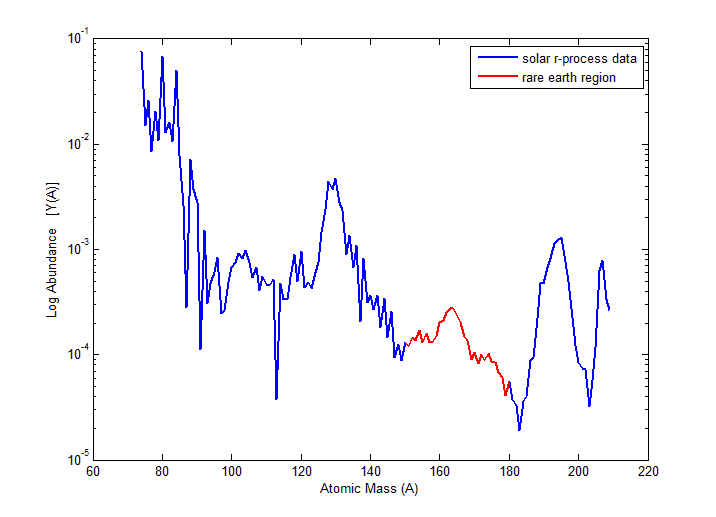
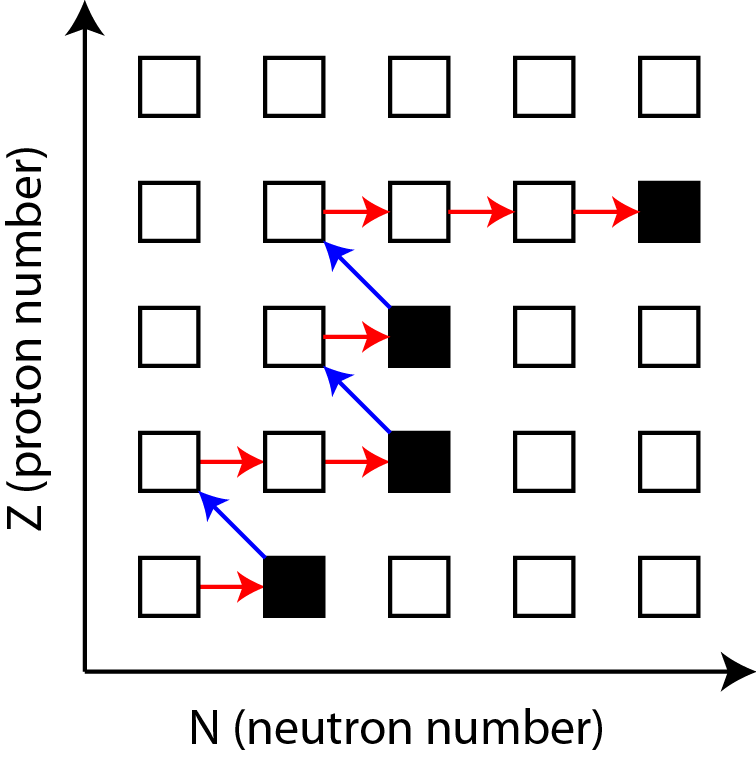
Believed to be responsible for the production of half the heavy elements above iron on the periodic table
Proceeds primarily via a series of rapid neutron captures and $\beta$-decays, hence $r$-process
Most improtant question: What is the astrophysical location where this can occur?
Understanding of the formation of the elements
One of the grand challenges of our time
The theoretical modeling of astrophysical environments
Atomic opacities for light curve observations
More generally, multi-messenger observations (gravitational waves, EM waves, etc.)
Precision experiments to constrain theory modeling
Nuclear theory for exotic nuclei
Data and observations are limited
All of these groups must work together to solve unanswered questions of $r$-process nucleosynthesis
I will focus on today the impact of one of the most critical pieces:
Nuclear theory & experiments
Nuclear physics as the language of the $r$-process
1st order: masses, $\beta$-decay rates, capture rates & fission
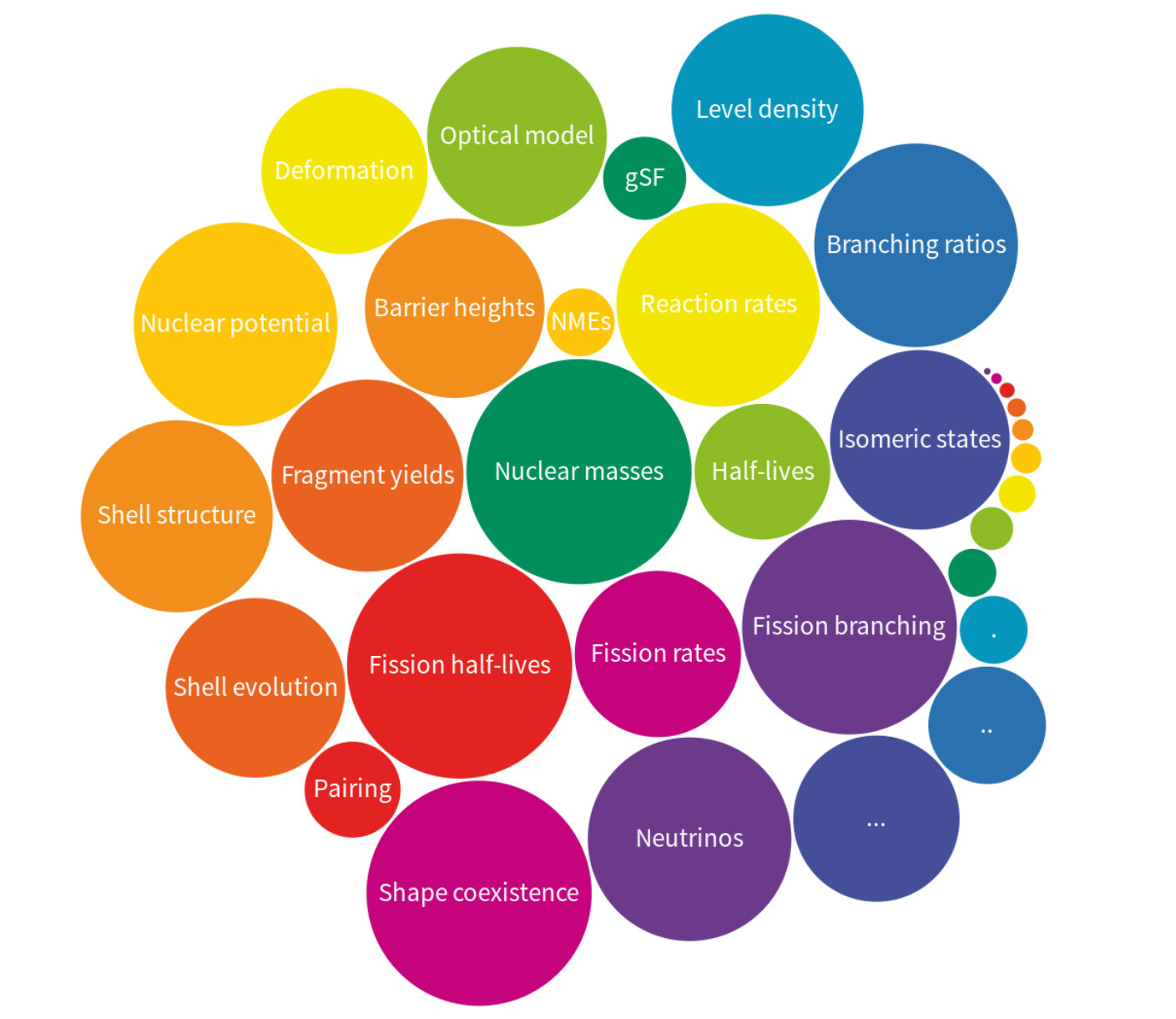
What do we know?
The chart of nuclides
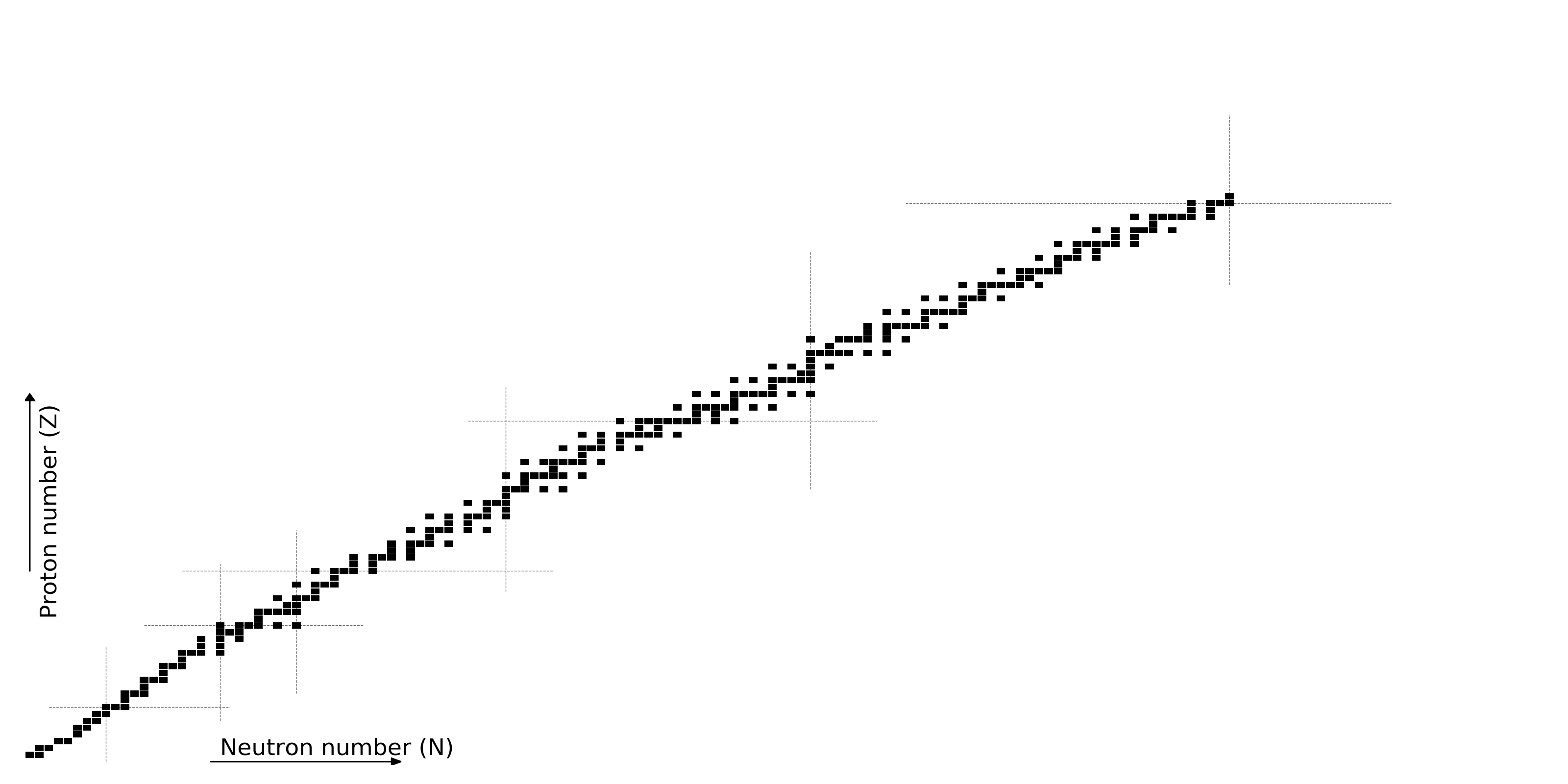
What do we know?
All half-lives
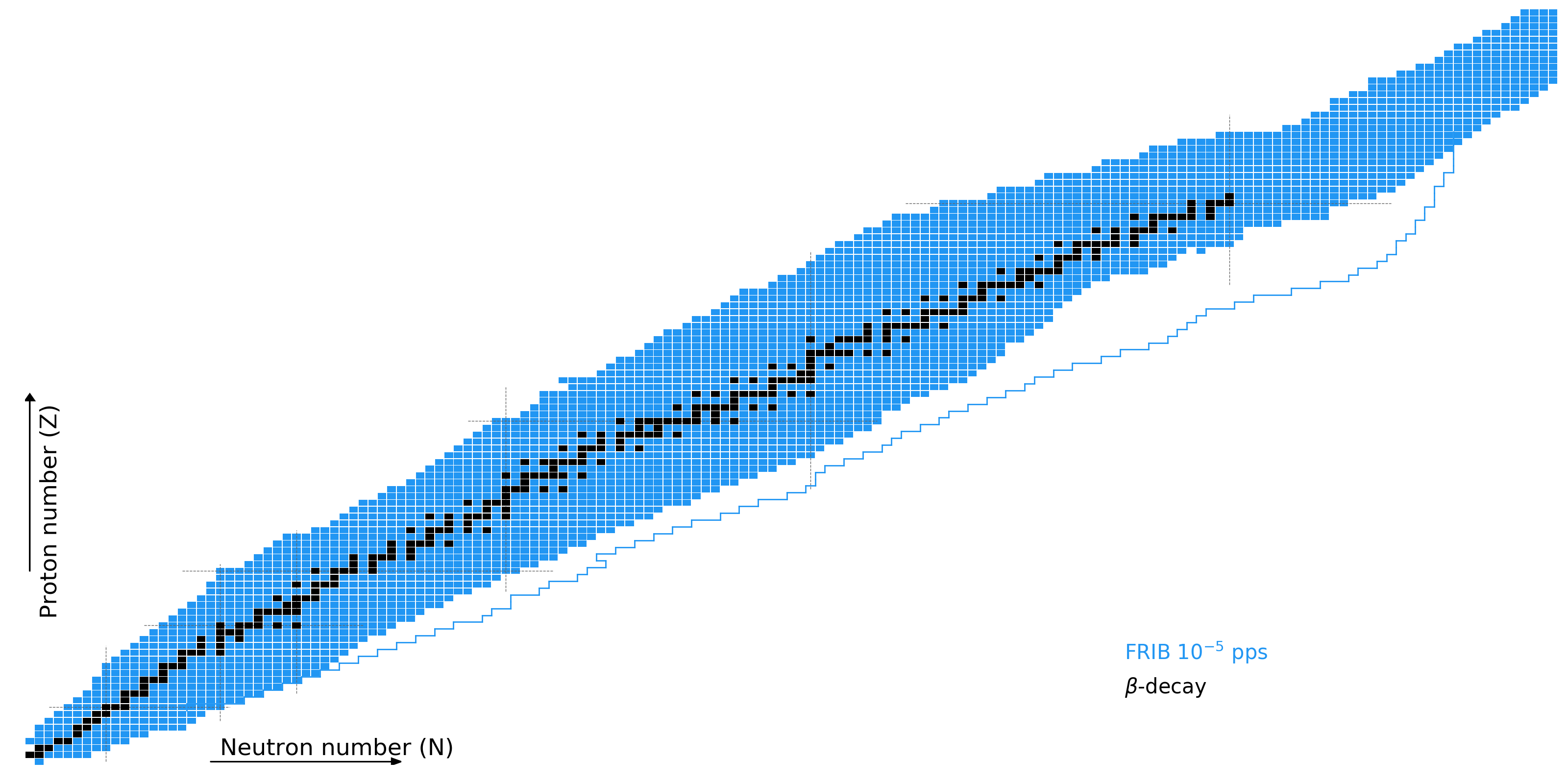
What do we know?
Nuclear masses
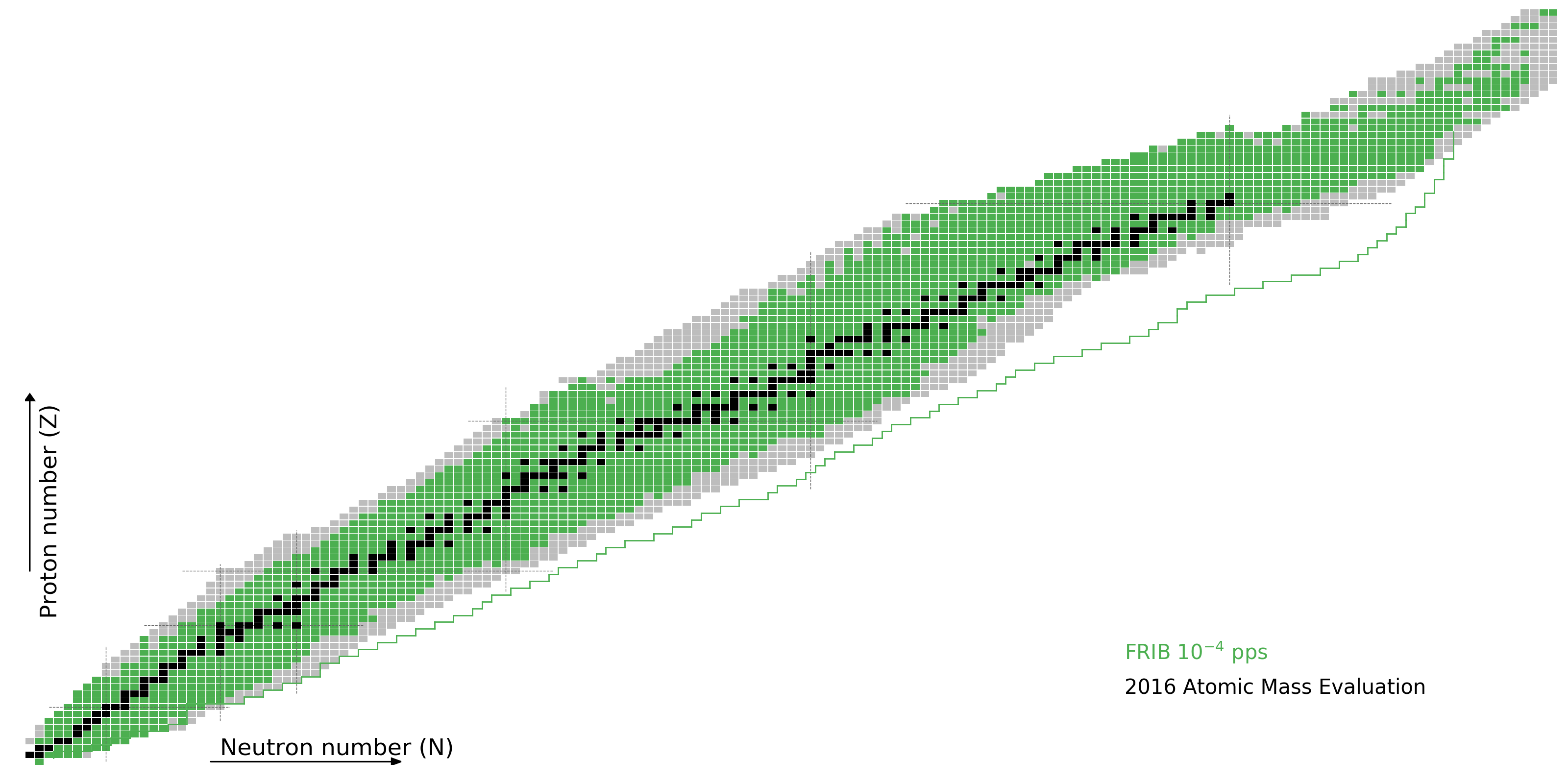
What do we know?
Neutron capture rates
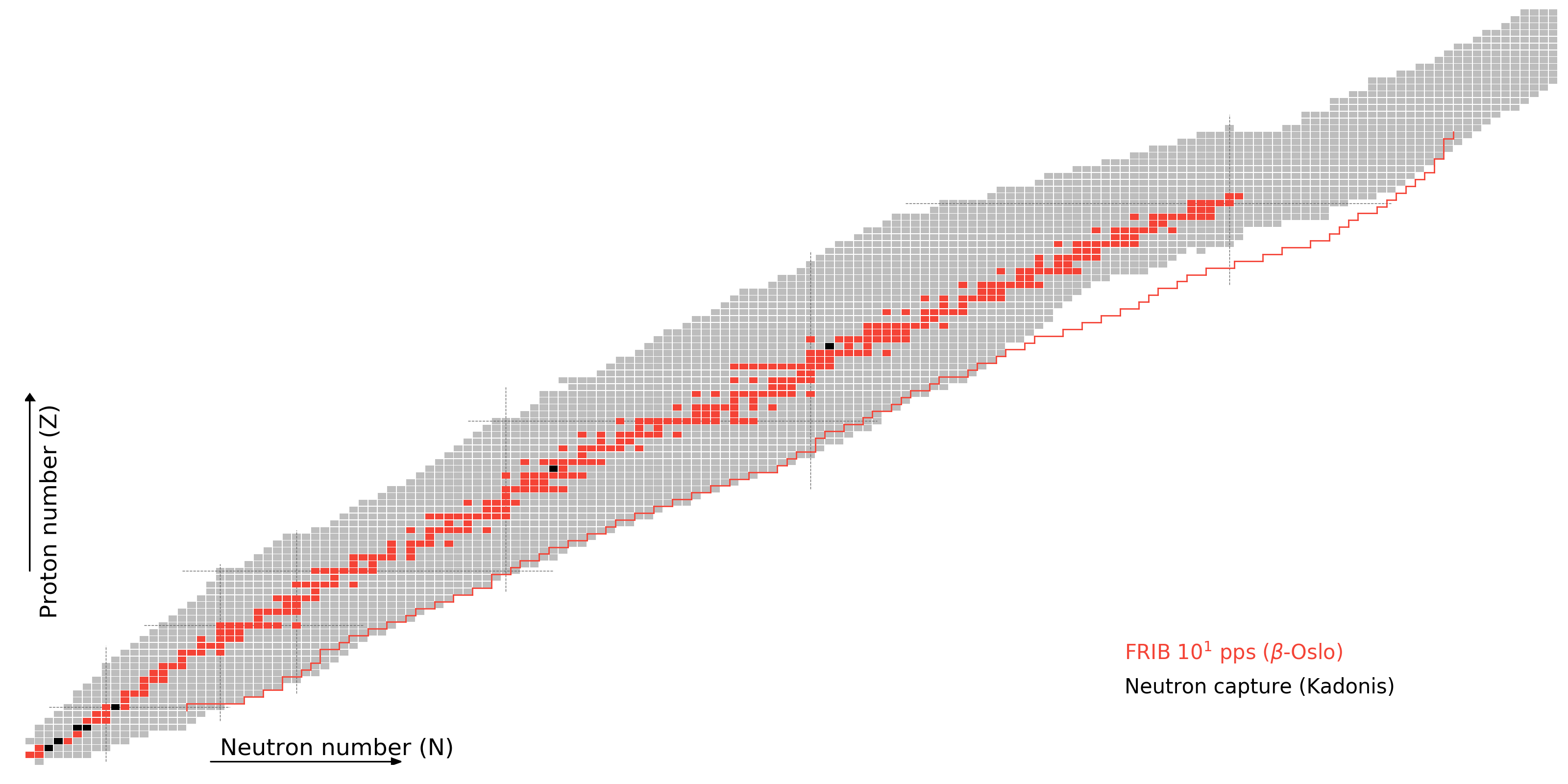
What do we know?
As of today, to varying degrees of accuracy
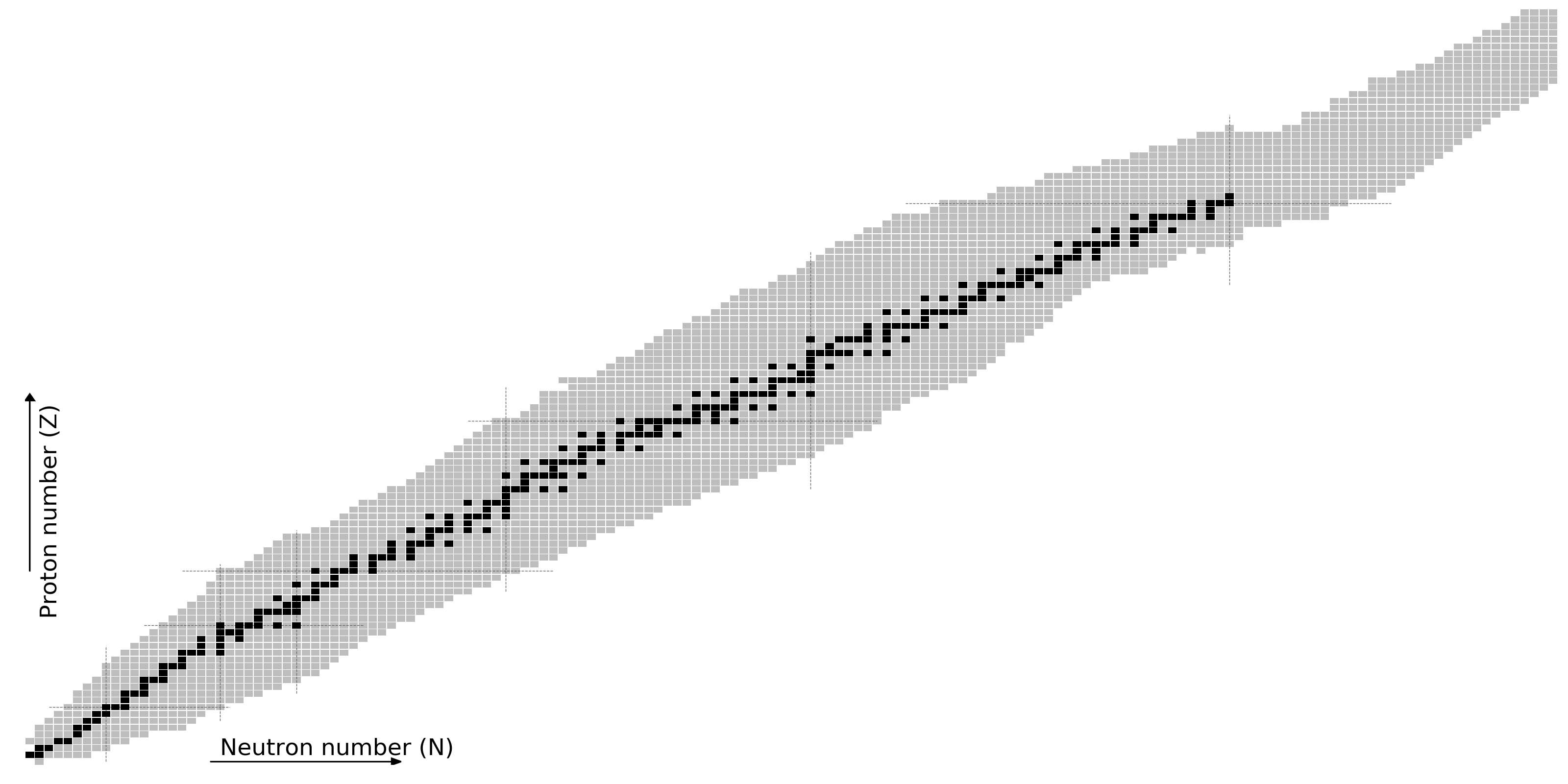
The r-process requires nuclear theory
Even in the era of FRIB
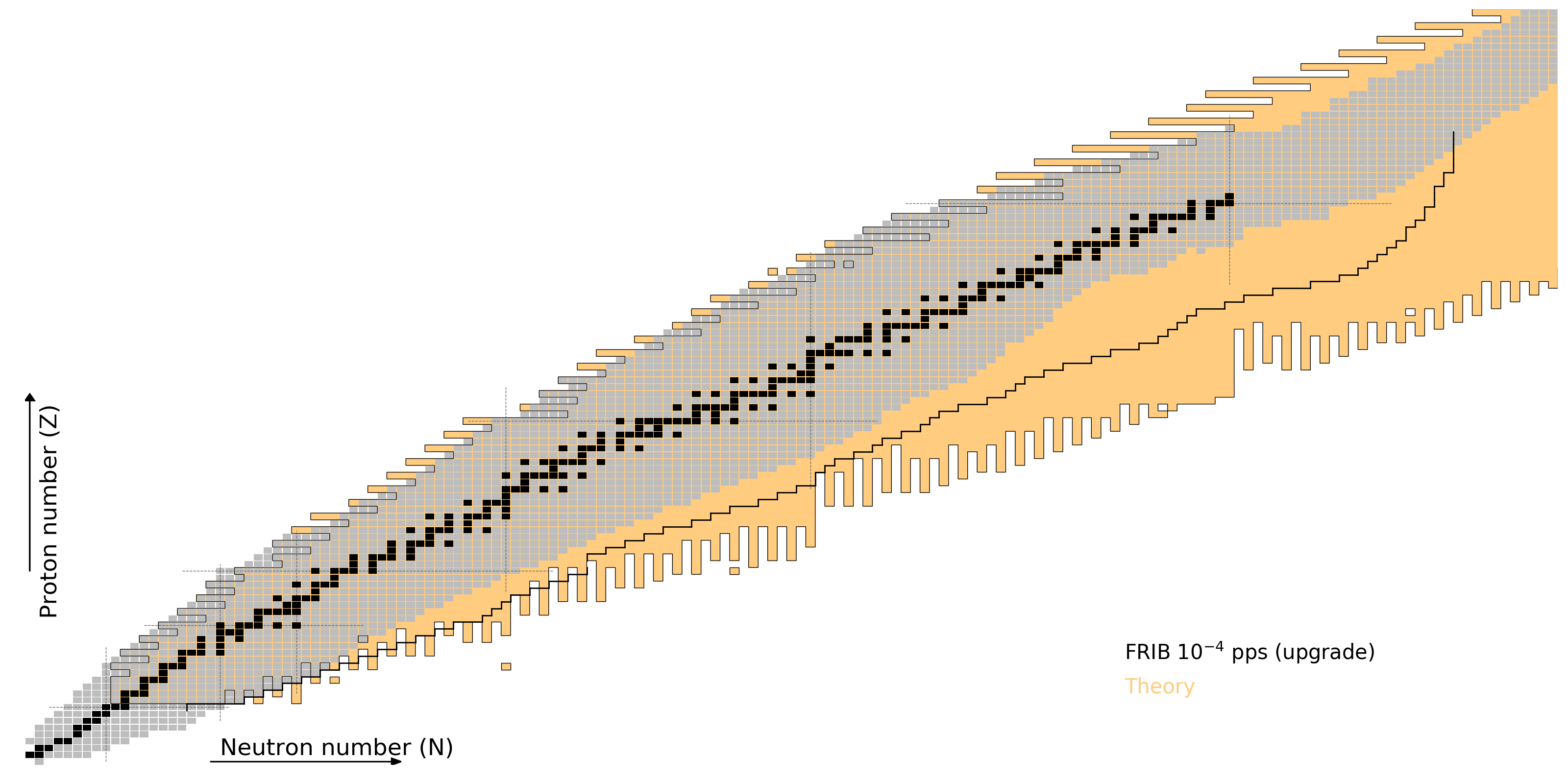
Variation in masses

Large variation in mass model predictions further from stability
Impacts our ability to accurately gauge the resultant composition of nucleosynthesis
Modern uncertainty bands from masses
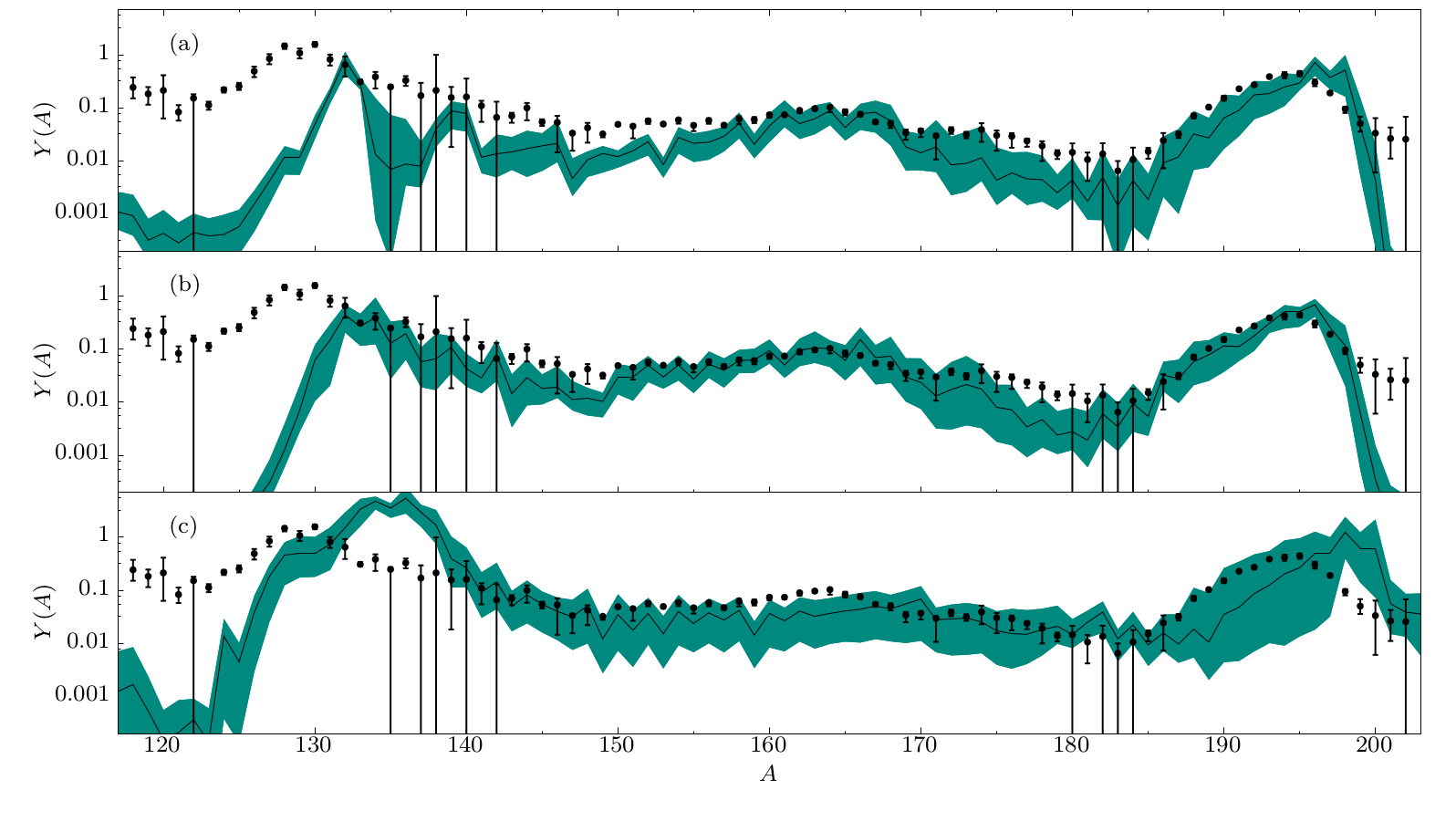
State-of-the-art DFT calculations used to predict abundances under three different astrophysical conditions
Varied uncertain masses ($\Delta \sim$ 600 keV) with correlations around the minimum DFT solution
Result: $\sim$1 order of magnitude uncertainty in abundances predictions; in agreement with our past work
Improvements to uncertainty band
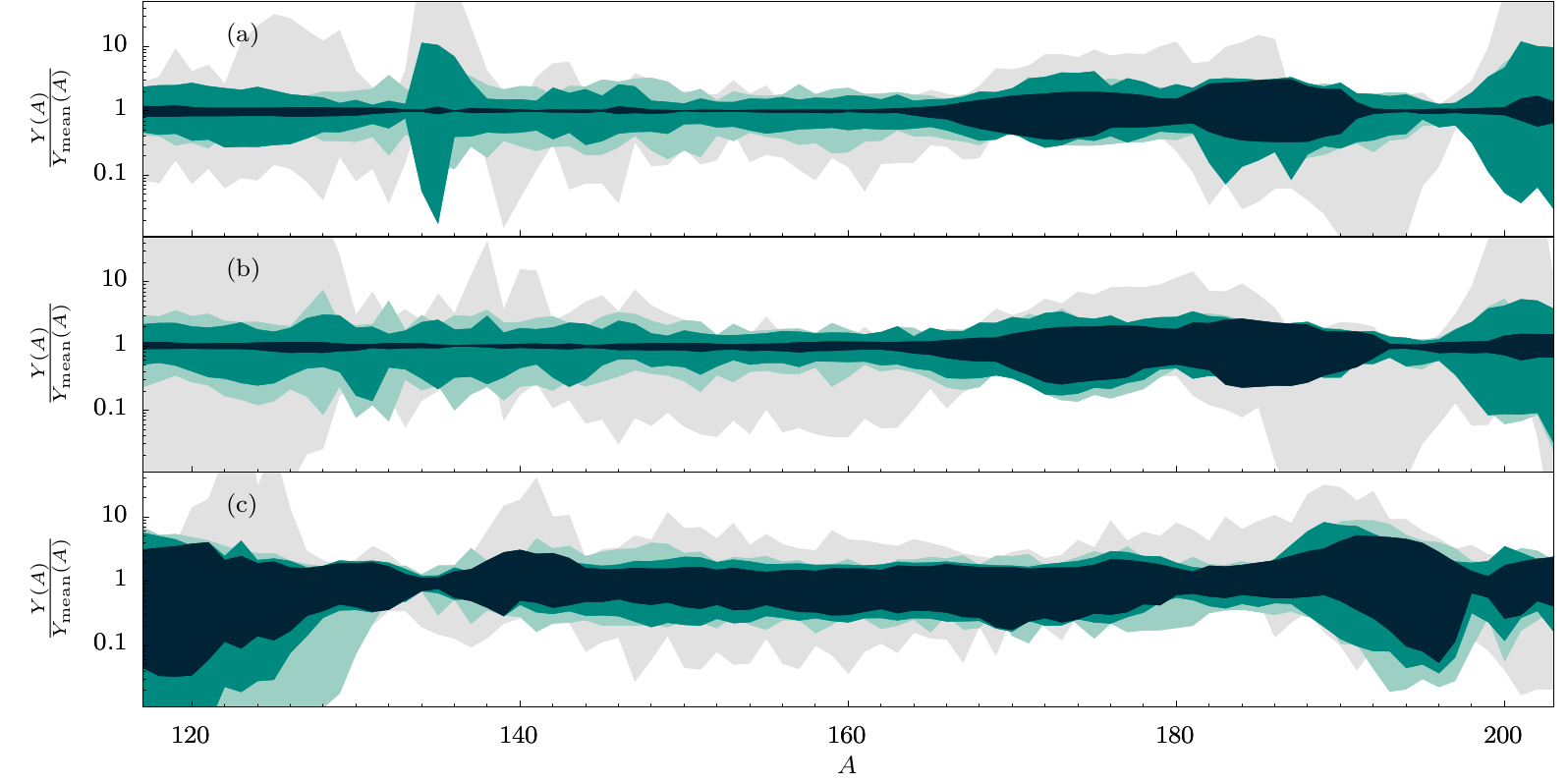
▣ Possible improvement with FRIB
▣ Currently available measuremens
▣ Range of DFT calculations
▣ Range of 15 mass models
New measurements at radioactive beam facilities will help reduce uncertainties
However, if fission plays a dominate role (bottom panel) we will need to reduce uncertainties elsewhere
Precise mass measurements
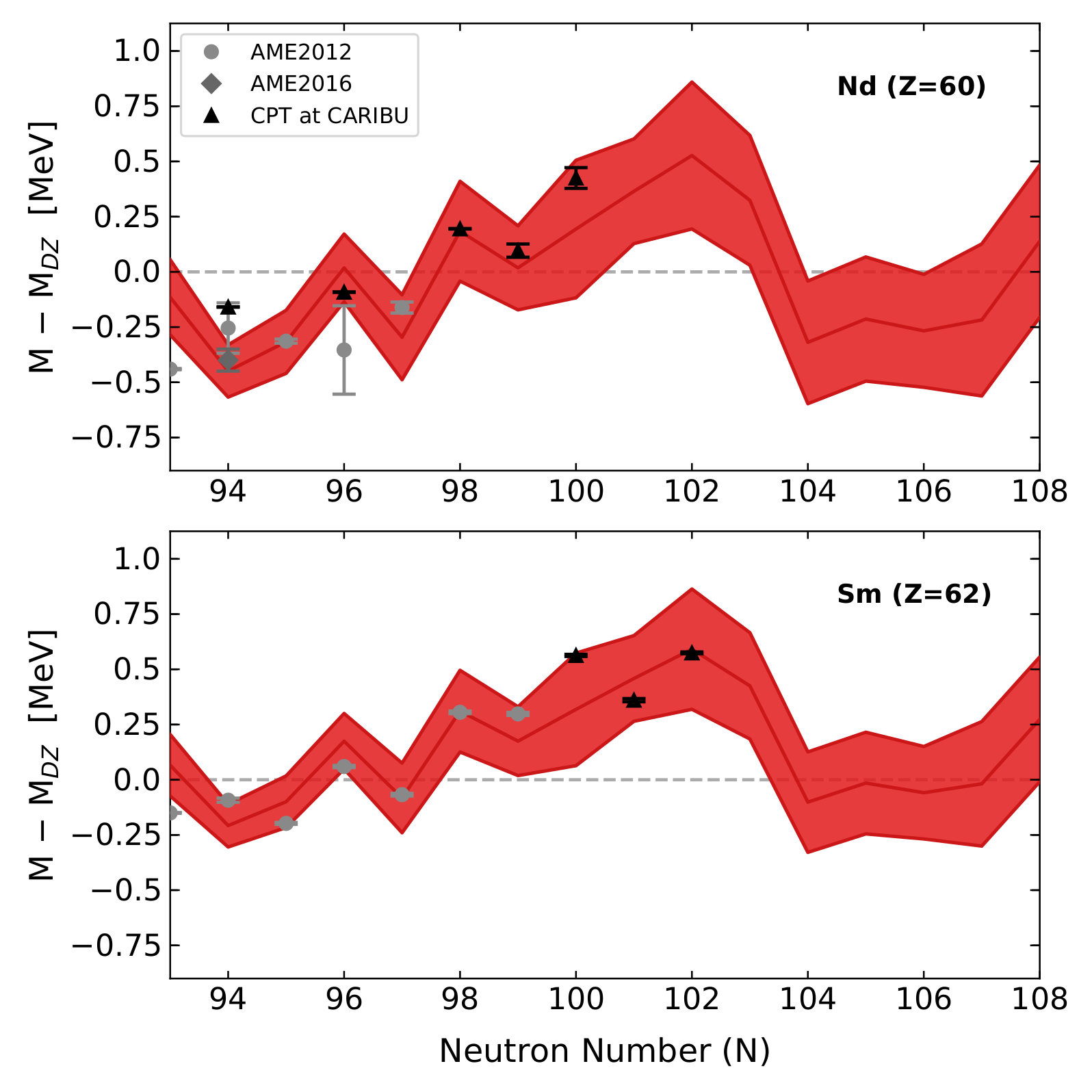
Also have the ability to diagnose $r$-process conditions
Here we predict trends along the mass chain based off a Bayesian technique - see Nicole's talk - next
Spallation Reactions
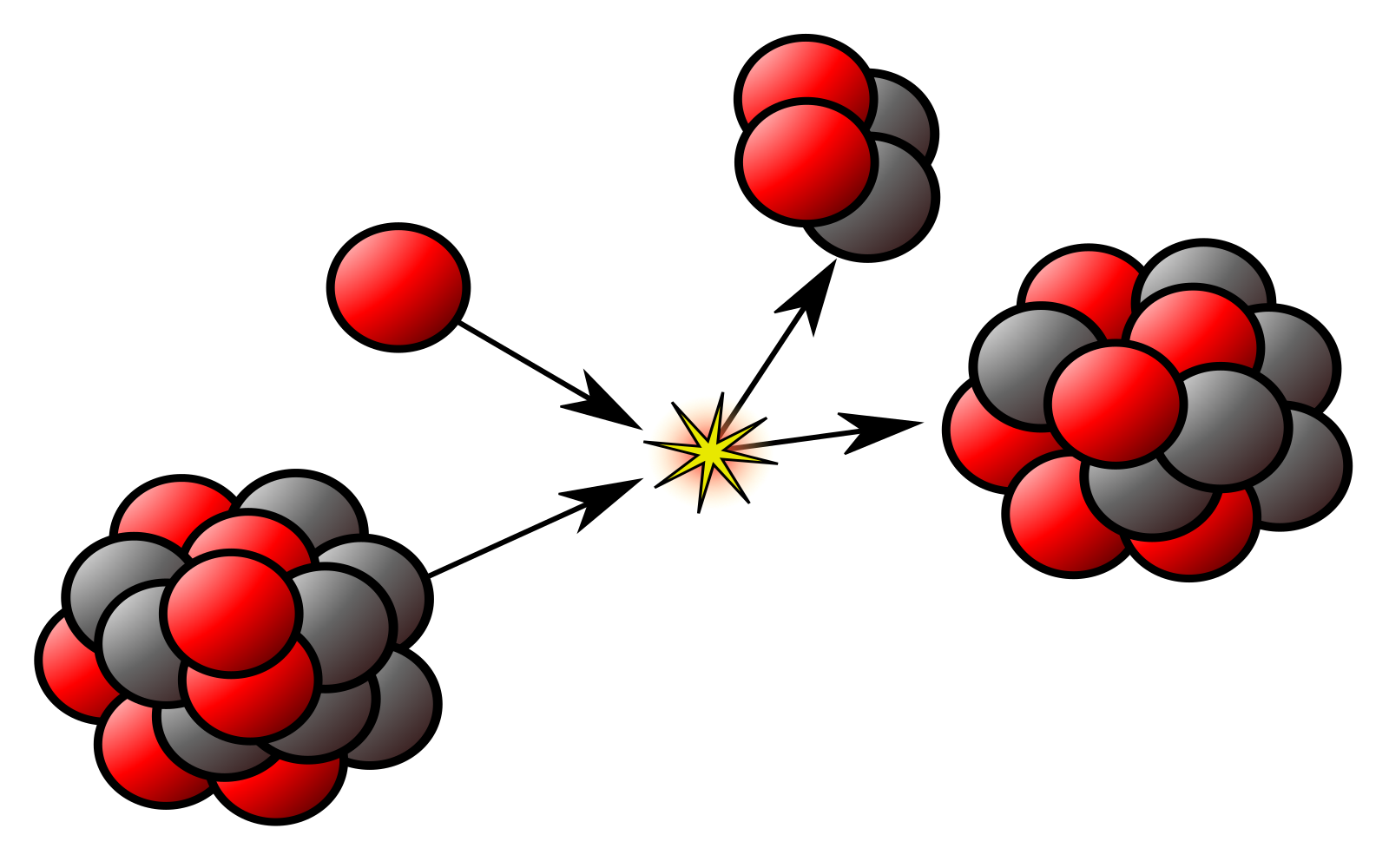
Some of the ejecta of neutron star mergers may be propelled at high velocity ($\sim$ 0.5c)
This material will eventually impact the interstellar medium
Spallation reactions on light nuclei might ensue, transmuting heavier species to slighly ligther ones
In contrast to the previous discussion on masses, these reactions occur on stable or near-stable nuclei
Spallation Reactions
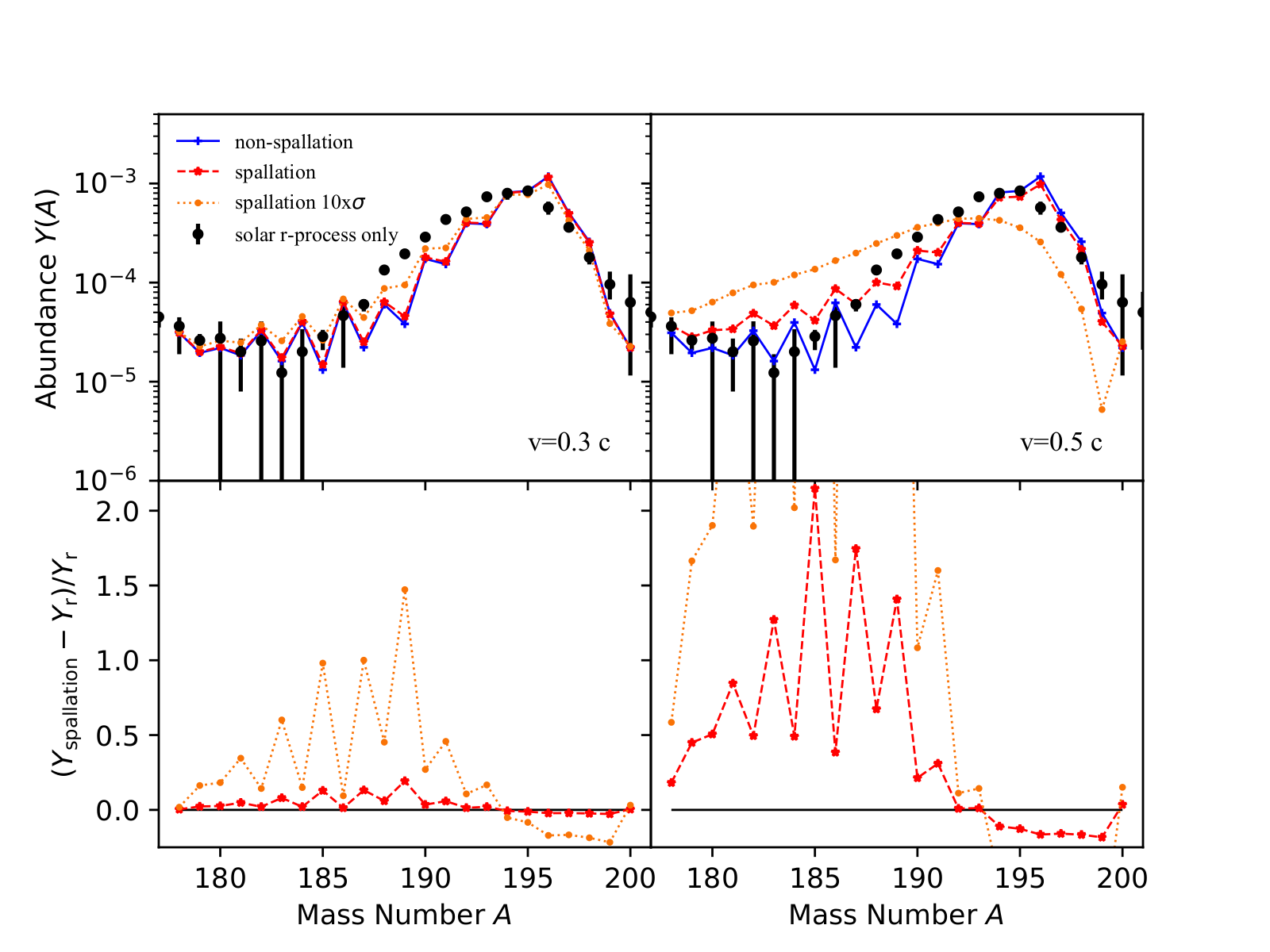
We find that spallation can alter the shape of the major abundance peaks, but the cross sections are uncertain
This is important for determining the correct production ratios of highly populated elements e.g. Pt, Os, Ir
Experimental efforts in this direction may be able to put a cosmic speed limit on $r$-process ejecta
Importance of decays
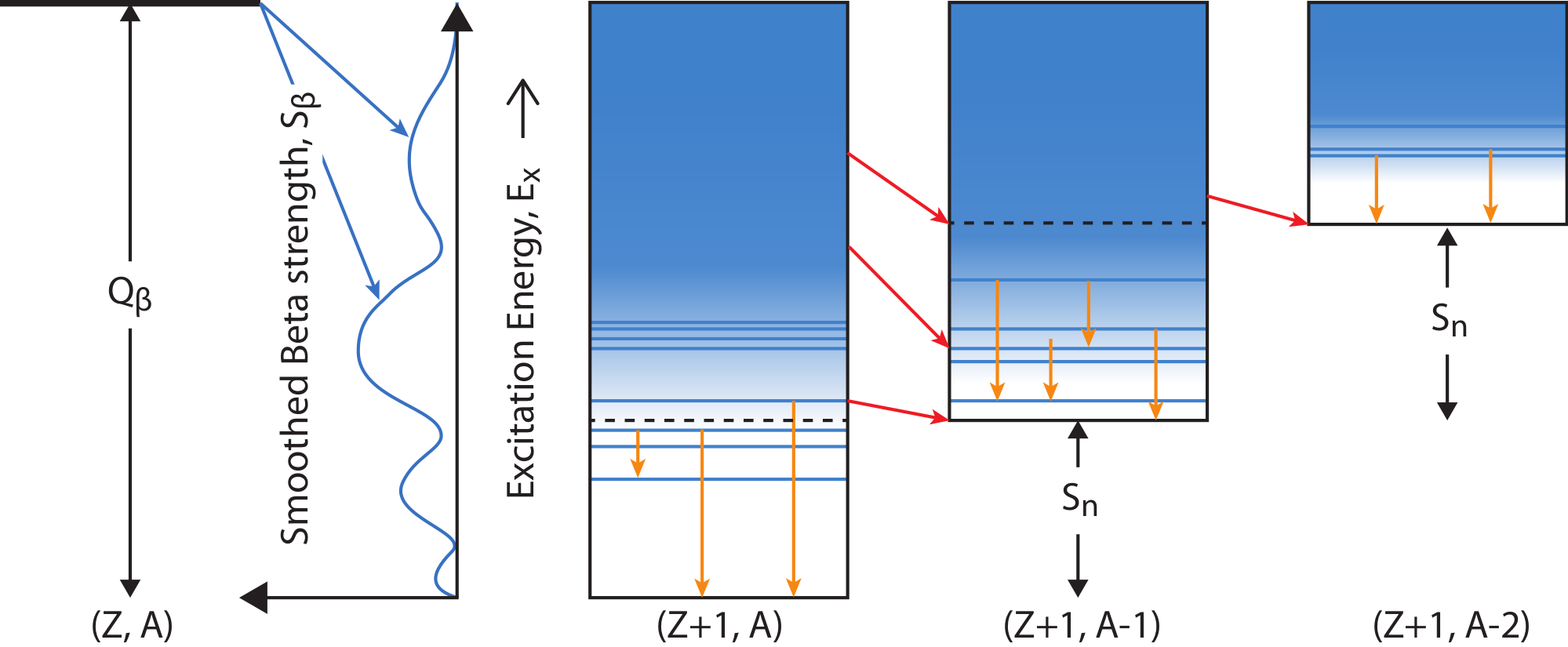
Nuclear decays strongly impact nearly every aspect of the $r$-process
the $r$-process path, production of superheavies, composition, energy generation, and observations
More effort should be focused on the next generation potential for $\gamma$-ray observations
$\gamma$-ray emission may proceed after a multitude of nuclear processes (as with $\beta$-decay in the above figure)
Merger $\gamma$-rays
One possible (yet very difficult) option is to attempt to observe the spectra from transients / remnants
For the $r$-process we should search for signatures of actinides, then we know we've produced everything
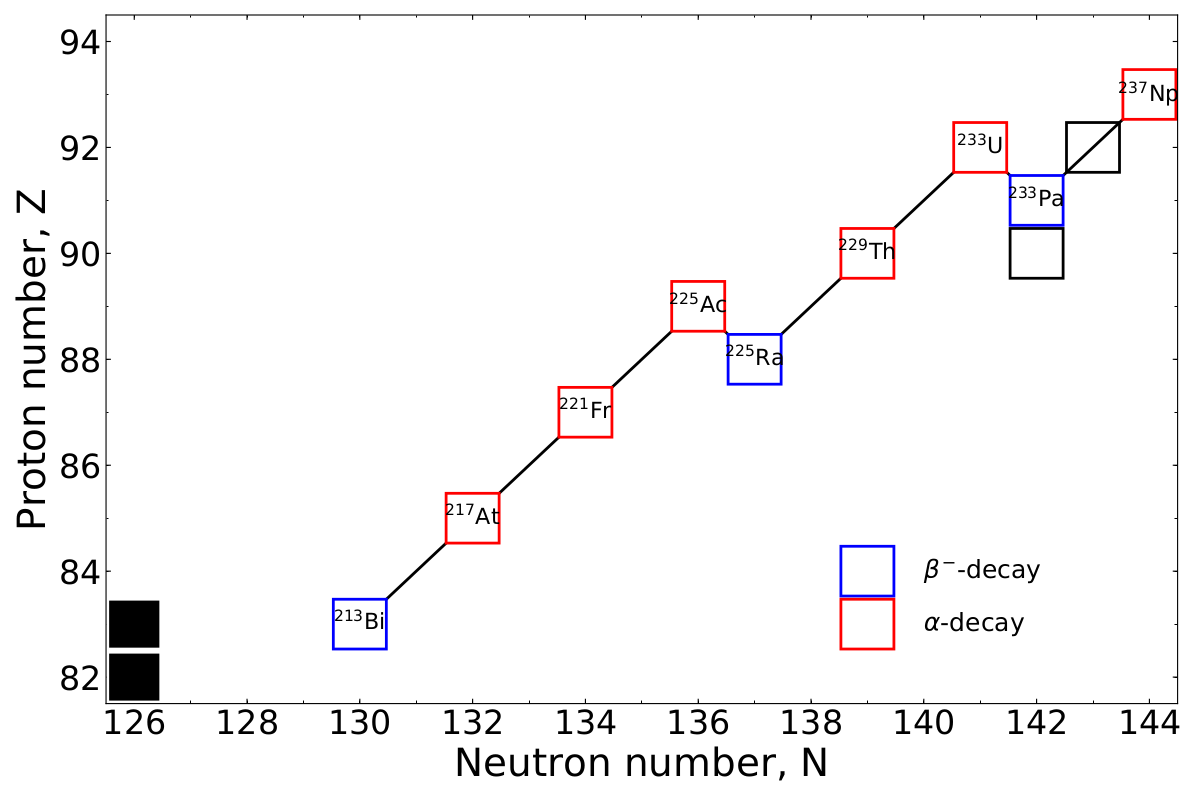
This involves following potentially complex decay chains...
$\gamma$-ray spectrum at 10 kyr
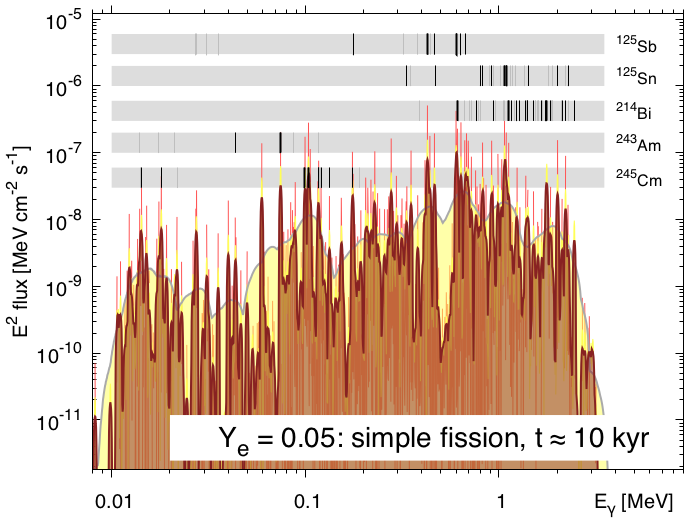
Distinct signatures do arise; despite line broadening
This depends sensitively on observational timescale
Can we do this with future space missions?
Observing $\gamma$-rays
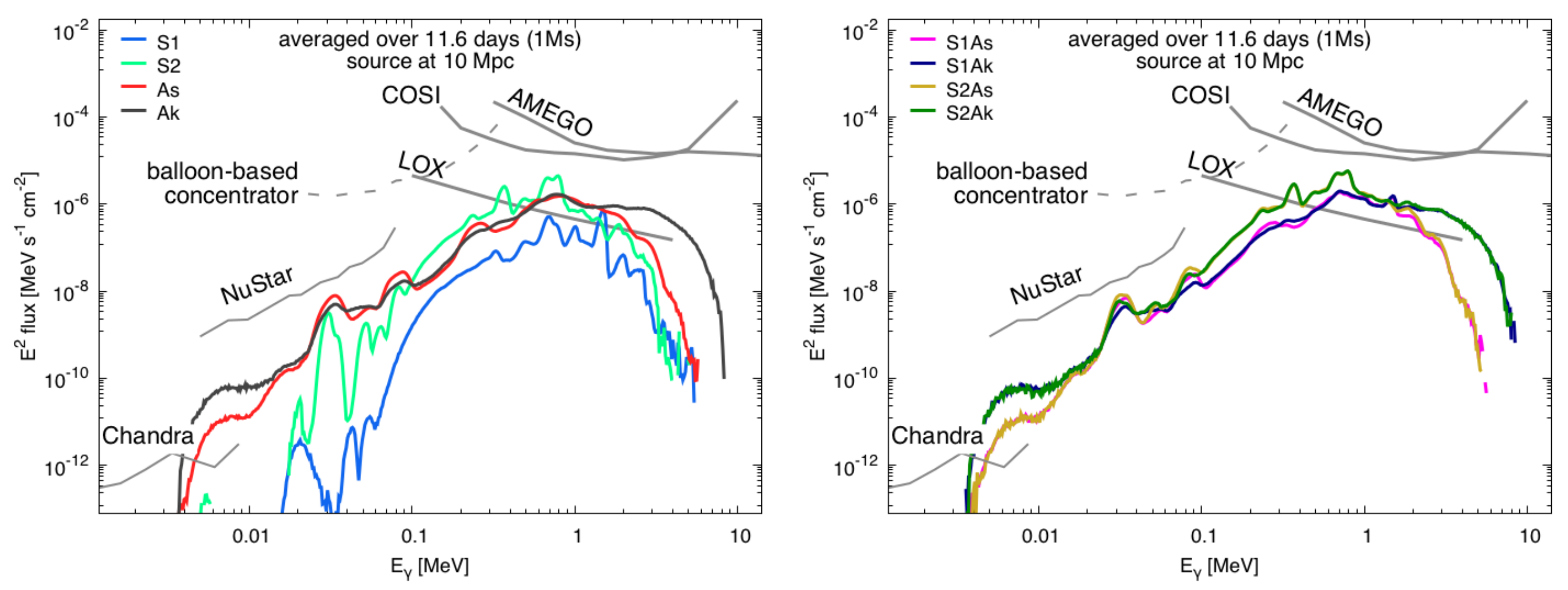
Differing composition may be able to be ascertained, but the event has to be close (10 Mpc or less)
Possible candidates:
The Lunar Occultation Explorer (LOX)
Compton Spectrometer and Imager (COSI)
All-sky Medium Energy Gamma-ray Observatory (AMEGO) may all be promising
Special thanks to
My collaborators
A. Aprahamian, J. Barnes, B. Côté, J. Clark, C. Fryer, E. Holmbeck, A. Hungerford, P. Jaffke, T. Kawano, O. Korobkin, S. Liddick, G. C. McLaughlin, J. Miller, G. W. Misch, P. Möller, R. Orford, J. Randrup, G. Savard, A. Sierk, N. Schunck, T. Sprouse, A. Spyrou, R. Surman, P. Talou, N. Vassh, M. Verriere, R. Vogt, X. Wang, Y. Zhu
& many more...
▣ Students ▣ Postdocs ▣ FIRE ▣ LANL
Summary
To understand the $r$-process requires a coordinated, multidisciplinary effort
In particular, a deep understanding of nuclear physics will be required
Nuclear physics is the language of the $r$-process, impacting:
Production pathways ▴ Energy generation ▴ Multi-messenger observations
FRIB, etc. will help to constrain nuclear models, but the heaviest elements will remain relatively inaccessible
We therefore need to keep developing and studying theoretical models of nuclear physics
Nuclear modeling is absolutely crucial if we want to prove definitively that heaviest elements, such as the actinides, were made in an event
Results / Data / Papers @ MatthewMumpower.com